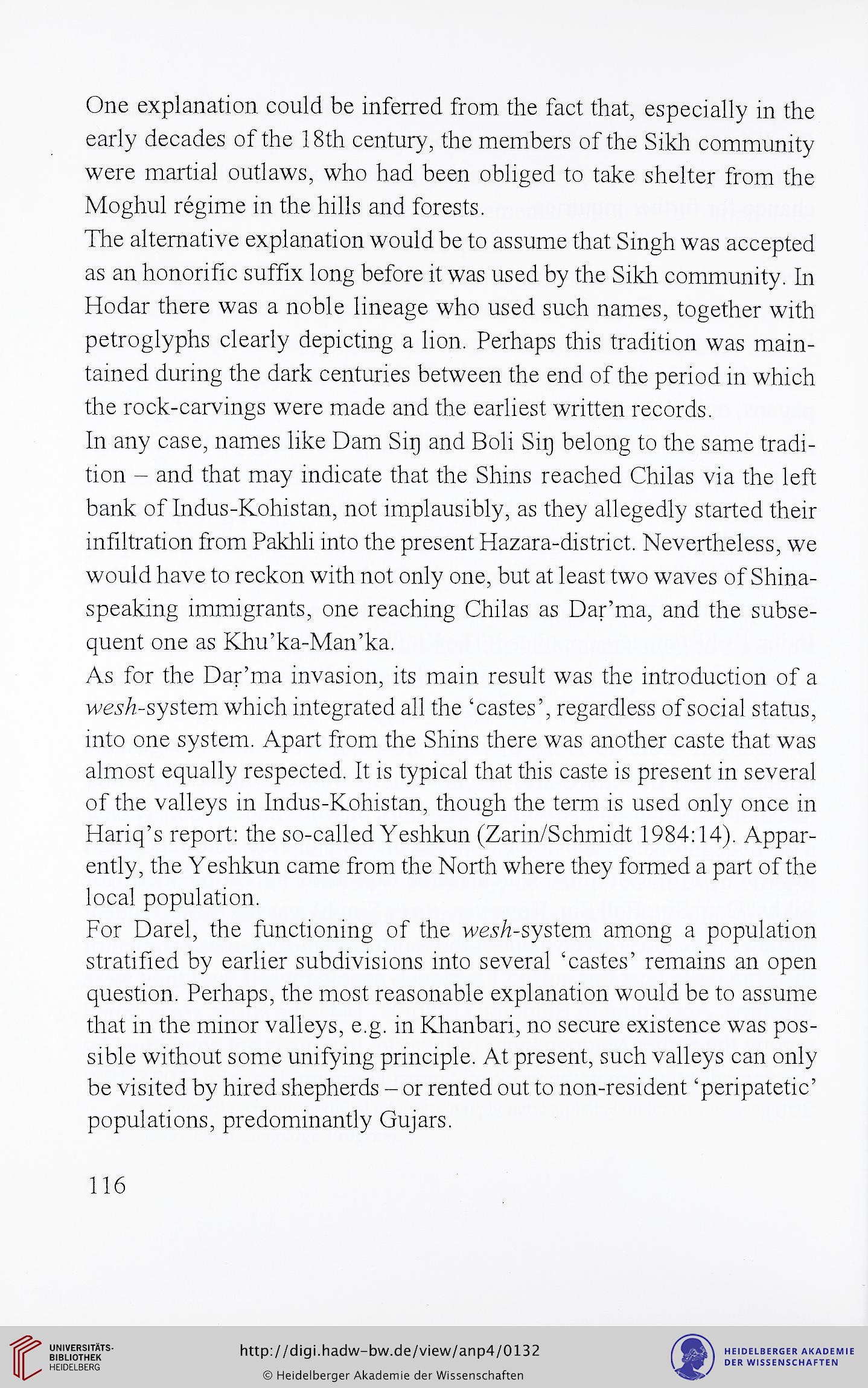One explanation could be inferred from the fact that, especially m the
early decades of the 18th century, the members of the Sikh community
were martial outlaws, who had been obliged to take shelter from the
Moghul regime in the hills and forests.
The alternative explanation would be to assume that Singh was accepted
as an honorific suffix long before it was used by the Sikh community. In
Hodar there was a noble lineage who used such names, together with
petroglyphs clearly depicting a lion. Perhaps this tradition was main-
tained during the dark centuries between the end of the period m which
the rock-carvings were made and the earliest written records.
In any case, names like Dam Sip and Boh Sip belong to the same tradi-
tion - and that may indicate that the Shins reached Chilas via the left
bank of Indus-KLohistan, not implausibly, as they allegedly started their
infiltration from Pakhli into the present Hazara-distnct. Nevertheless, we
would have to reckon with not only one, but at least two waves of Shina-
speakmg immigrants, one reaching Chilas as Dar'ma, and the subse-
quent one as Khu'ka-Man'ka.
As for the Dar'ma invasion, its main result was the introduction of a
w^A-system which integrated all the 'castes', regardless of social status,
into one system. Apart from the Shins there was another caste that was
almost equally respected. It is typical that this caste is present in several
of the valleys m Indus-Dohistan, though the term is used only once m
Hanq's report: the so-called Yeshkun (Zarin/Schmidt 1984:14). Appar-
ently, the Yeshkun came from the North where they formed a part of the
!ocal population.
For Darel, the functioning of the waCi-system among a population
stratified by earlier subdivisions into several 'castes' remains an open
question. Perhaps, the most reasonable explanation would be to assume
that m the minor valleys, e.g. m Khanbari, no secure existence was pos-
sible without some unifying principle. At present, such valleys can only
be visited by hired shepherds - or rented out to non-resident 'peripatetic'
populations, predominantly Gujars.
116
early decades of the 18th century, the members of the Sikh community
were martial outlaws, who had been obliged to take shelter from the
Moghul regime in the hills and forests.
The alternative explanation would be to assume that Singh was accepted
as an honorific suffix long before it was used by the Sikh community. In
Hodar there was a noble lineage who used such names, together with
petroglyphs clearly depicting a lion. Perhaps this tradition was main-
tained during the dark centuries between the end of the period m which
the rock-carvings were made and the earliest written records.
In any case, names like Dam Sip and Boh Sip belong to the same tradi-
tion - and that may indicate that the Shins reached Chilas via the left
bank of Indus-KLohistan, not implausibly, as they allegedly started their
infiltration from Pakhli into the present Hazara-distnct. Nevertheless, we
would have to reckon with not only one, but at least two waves of Shina-
speakmg immigrants, one reaching Chilas as Dar'ma, and the subse-
quent one as Khu'ka-Man'ka.
As for the Dar'ma invasion, its main result was the introduction of a
w^A-system which integrated all the 'castes', regardless of social status,
into one system. Apart from the Shins there was another caste that was
almost equally respected. It is typical that this caste is present in several
of the valleys m Indus-Dohistan, though the term is used only once m
Hanq's report: the so-called Yeshkun (Zarin/Schmidt 1984:14). Appar-
ently, the Yeshkun came from the North where they formed a part of the
!ocal population.
For Darel, the functioning of the waCi-system among a population
stratified by earlier subdivisions into several 'castes' remains an open
question. Perhaps, the most reasonable explanation would be to assume
that m the minor valleys, e.g. m Khanbari, no secure existence was pos-
sible without some unifying principle. At present, such valleys can only
be visited by hired shepherds - or rented out to non-resident 'peripatetic'
populations, predominantly Gujars.
116




